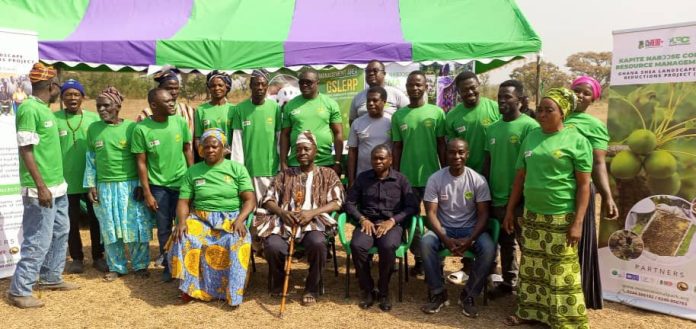The Mole National Park in partnership with the Ghana Shea Landscape Emission Reduction Project (GSLERP) has on 13th of December 2023 inaugurated the Community Resource Management Committee (CREMA) to regulate and control access to wildlife and natural resources at the Jintilpe community in the Bole District of the Savannah region.
The beneficiary communities are; Grupe, Seyiri, Nasoryiri, Jentilpe, Buge, Nyange, Soditey, and Sogoryiri.
The Project Manager, Dr Emmanuel Baapeng of the Ghana Shea Landscape Emission Reductions Project (GSLERP) the GSLERP project has so far, planted over 3million seedlings in severely degraded forest reserves and shea parklands, established 46 nurseries, refurbished and constructed 10 warehouses and trained over 3,000 women in sustainable parkland management, cooperative development, shea aggregation marketing and improved business management.
He added that Climate change is one of the most complex issues facing us today. It involves many dimensions – science, economics, society, and politics. It is no longer a secret that climate change is an important threat that needs global attention and collaborative effort by all and sundry.
Dr Emmanuel Baapeng further said, “the Savannah landscape, with its rich biodiversity and immense ecosystem is one of the ecological zones that is threatened by the effects of climate change. Rising temperatures, loss of biodiversity, change in rainfall patterns and increased drought are but a few of the consequences we are witnessing in our environments and these need action to remedy the situation”.
He said the Environmental Protection Agency report 2021 states that agriculture, forestry and other land, use contribute to 40.2% of greenhouse gas (GHG) emissions. The rise in emissions attributable to agriculture are largely driven by associated increases in methane emissions as a result of animal rearing, rice production and fertilizer application on croplands.
Dr Richard Gyimah, the Director of Stakeholders & Eco- Tourism, Wildlife Division of Forestry Commission in his speech said the primary institutional mechanism for implementing collaborative wildlife management outside Protected Areas (PA) is the Protected Area Management Advisory unit/Board (PAMAU) and the Community Resource Management Area (CREMA) approach and that this CREMA mechanism is a decentralized community-based natural resource management (CBNRM) framework that enables local people to manage their natural resources.
He added that, “the Wildlife Division in co-operation with the District Assembly and Traditional Authorities (where appropriate) will give the authority to a community represented by a locally elected Community Resource Management Committee (CRMC) to regulate and control access to wildlife and other natural resources in the area defined as the CREMA.
Dr Richard Gyimah, the Director further said; “The CREMA leadership is then held accountable for the protection, conservation and sustainable use of all wildlife in its own area of jurisdiction. The CREMA approach gives greater opportunity for local people to manage their natural resources for economic and socio-cultural benefits, in addition to other donor supported livelihoods activities.
He also said the associated benefits of CREMA in the Country are enormous which is evident in the increased interest by more local communities to establish their own CREMAs, and increased donor willingness to fund committed constituent communities in this regard. The Wildlife Division has elevated its Collaborative Resource Management Unit into a Directorate for Ecotourism and Stakeholder Relations which is spearheading the development and establishment of CREMAs across the country.
Dr Richard Gyimah stated; “At the park level we have staff assigned a facilitation role for the development of the CREMAs. There are currently about 45 CREMAs at various stages of development across the country, of which 33 have received certificates of devolution from the Government of Ghana. The government of Ghana has further demonstrated its commitment to community led environmental governance with the passage of Wildlife Resources Management Bill which strengthens the legal authority and scope of CREMAs to administer, manage and share the benefits of managing natural resources, including both fauna and flora, at the local level”.
He said the role of Traditional Authority is essential in CREMA formation, development and operations and that as cultural leaders and major landowners; they have significant influence on the use of natural resources and on how people act.
The District Chief Executive (DCE) for Sawla-Tuna-Kalba Hajia Barikisu Losina said it was his utmost pleasure to have been invited to give a speech on the occasion of the inauguration of the governance structures of the Kapite Nabɔɔse CREMA.
She said; “the Community Resource Management Area CREMA is a concept developed by the Wildlife Division of Forestry Commission of Ghana to promote collaborative and participatory wildlife management in the country. It is an inclusive natural resources governance and management framework which recognizes and fosters local community participation in responsible and sustainable management of natural resources in Ghana with the aim of encouraging local people to integrate wildlife management into their farming and land management systems as a legitimate land-use option.
The Sawla DCE added that the developing the CREMA management structures various consultations were held at stakeholder and community engagements. Community Resource Management Committees (CRMCs) were later established in each CREMA community culminating in the nomination and election of the CREMA Executive Committee members.
She added that Executive committee members made up of various opinion leaders and decision makers within the communities, is the over-arching management body that will direct and oversee CREMA operations and decision-making. I am therefore tasking you to carry out your duties diligently so as to ensure a thriving CREMA that will be the envy of all in the landscape.
She noted; “I am certain that as the CREMA continues to evolve, you will have the continued support of the Mole National Park and the project managers to ensure a well-functioning CREMA. I will like to assure the Mole National Park that the Assembly is ready and willing to support the development of the constitution and bye-laws necessary to strengthen and coordinate the functions of the Kapite Nabɔɔse CREMA. Let me also assure you of my desire to see the CREMA officially inaugurated and ready to receive its certificate of devolution while contributing significantly to the socio-economic well-being of the eight CREMA communities”.
The DCE urged all to support the CREMA process by helping to ensure that natural resources are managed in a sustainable and equitable manner which can help to protect wildlife habitats, promote the conservation of our biodiversity while supporting in the improvement of the livelihoods of local communities.
The Chairman of the ceremony, Tolodompewura Abdallah Ahmed (Chief Monor) thanked all the speakers, chiefs, and all those in attendance and entreated the Community Resource Management Committee (CREMC) and members to work together the future benefits of their communities.
The CREMC was inaugurated with the swearing-in done by his lordship, Edward Essel, the Bole magistrate court judge.
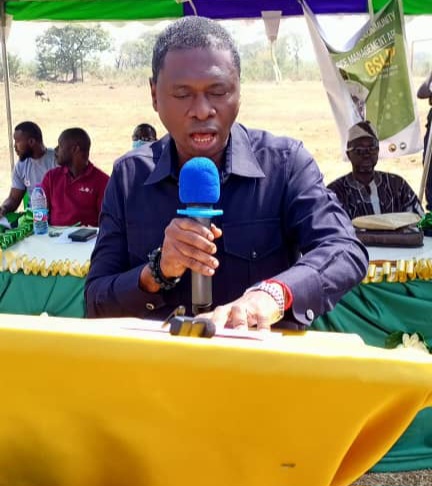
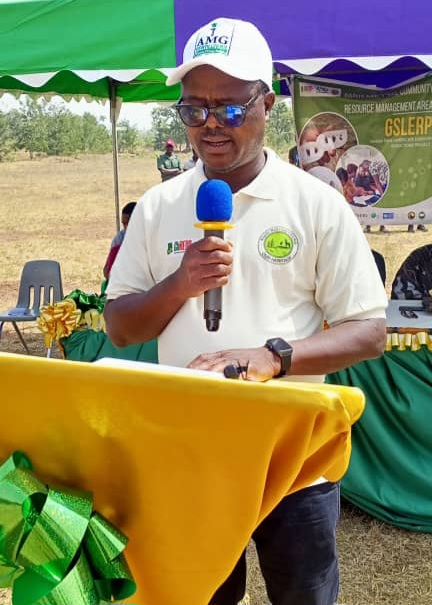

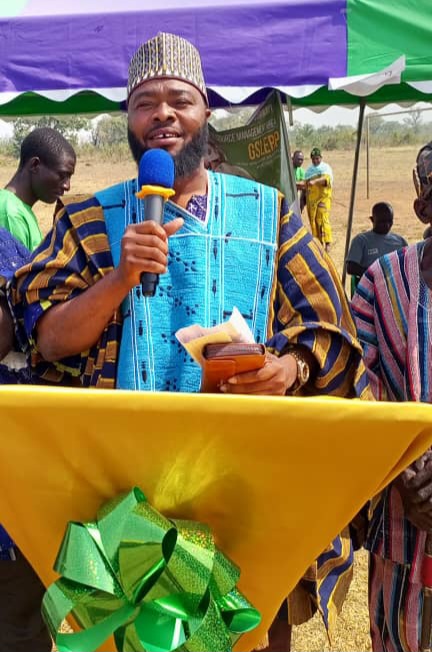
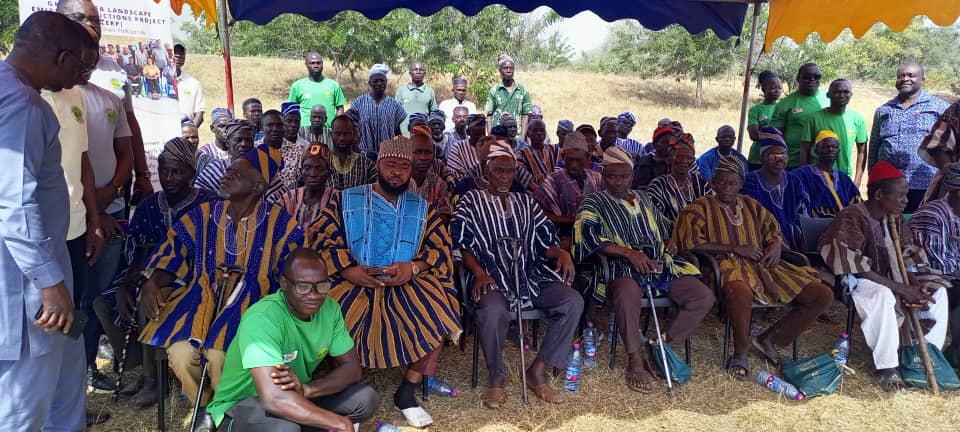
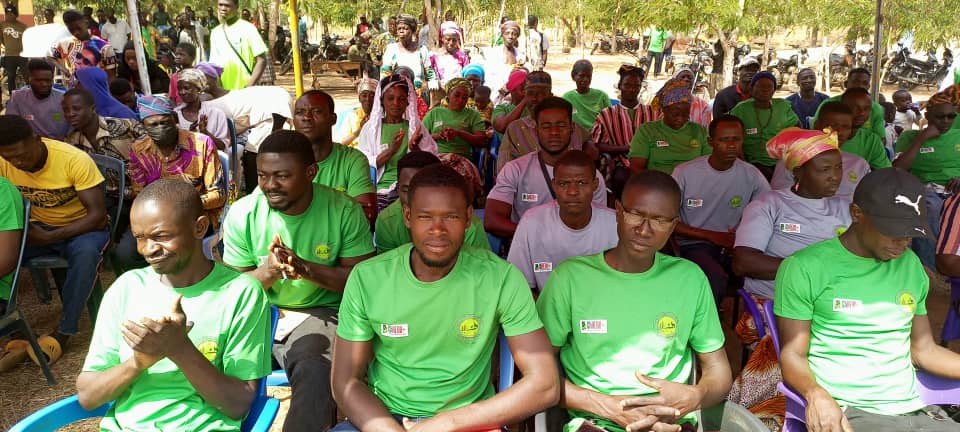
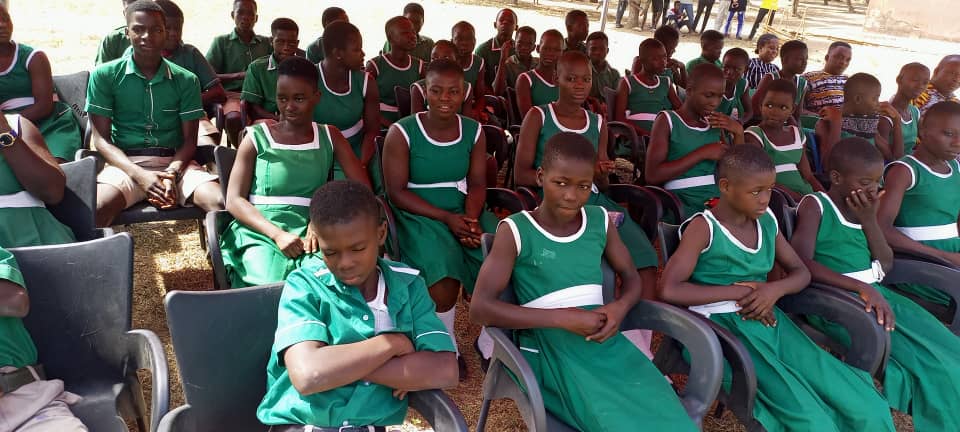
Source: nkilgifmonline.com

